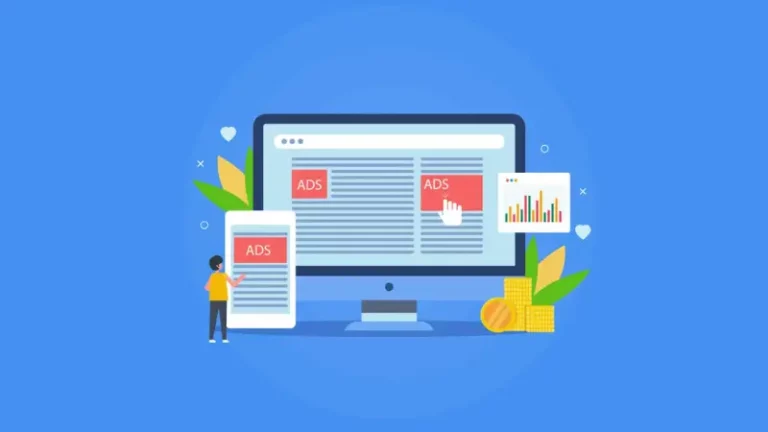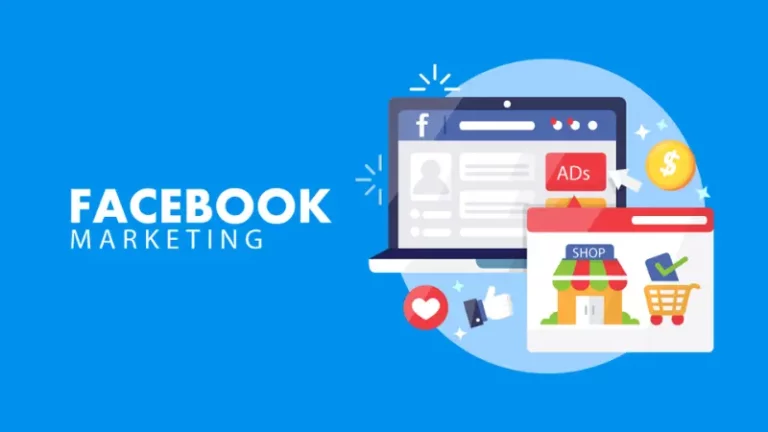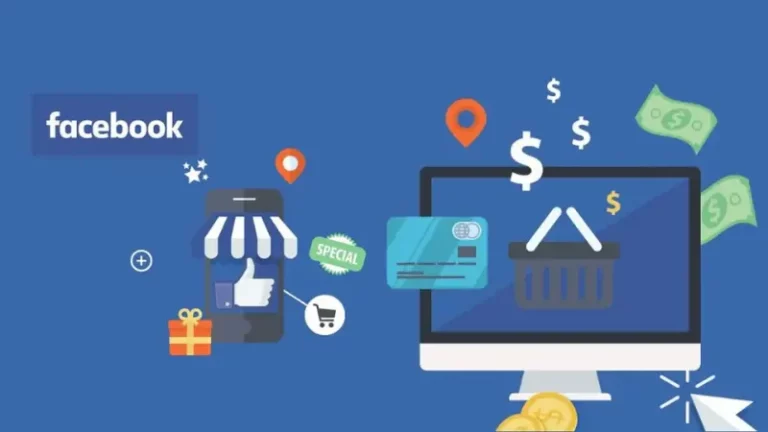If your Facebook ad campaigns are becoming increasingly expensive while performance is declining, you might be making one of the five most common mistakes encountered by many advertisers. With over $1 million in ad budget spent, we can confirm: by simply fixing these errors, your ad performance will visibly improve, and scaling your business will become ten times easier.
In this article, Optimal Agency will share an essential checklist to help you, especially beginners in Facebook advertising, understand the core elements to avoid wasting budget and maximize campaign effectiveness. These are the fundamentals you must master if you want to succeed in the field of Facebook advertising.
12 Note for running Facebook Ads effectively, boosting sales dramatically
For Facebook ad campaigns to truly deliver results, regardless of whether you are a beginner or experienced, you need to master foundational elements before starting. Below are the 12 most important notes to help you build and manage professional Facebook Ads campaigns, from creating a Business Page and installing the Pixel to checking events and testing multiple ad creatives. Whether you are a small business owner or a marketing specialist, these tips will help you increase your conversion rate, reduce costs, and scale sales more sustainably.
Use Facebook Business Manager to manage ad assets
Facebook Business Manager is the tool that helps advertisers manage all their assets: Fanpages, ad accounts, pixels, audiences, and even the delegated personnel team. We advise you to set up this tool early to avoid losing access when an account is locked or a staff member leaves. If you don’t know how, you can find the detailed tutorial videos we have shared.
Set up a valid payment method

Facebook will not allow ads to run if you haven’t added a payment card or verified your payment method.
In Vietnam, Facebook allows the run-first, pay-later model; however, you still need to add a valid Visa/MasterCard. A small note: if you are using an agency account, ensure the card is correctly linked to the sub-account to avoid payment rejection.
Use the Conversion API for increased data accuracy
After the iOS 14 update, the Pixel became limited in data collection. Therefore, Facebook launched the Conversion API (CAPI) to send data directly from the server, helping to track conversions more accurately. We recommend installing both Pixel and CAPI in parallel, especially if you are running e-commerce advertising, to avoid losing up to 30% of critical conversion data.
Check events with the Test Events tool
Many advertisers install events but forget to check their activity, leading to inaccurate data recording.
The Test Events tool in Facebook helps you verify whether actions on your website are recognized by the Pixel. For example, you can try clicking the “Buy Now” button on your website to see if Facebook reports the “Purchase” action.
Domain Verification
In Events Manager → Settings, Facebook requires domain verification to ensure you have ownership of the website. If you see a red warning bar, verify it immediately; this only takes a few minutes but helps you accurately measure conversions and allows you to optimize based on the “Purchase” or “Lead” event.
Provide existing customer data
If you already have a file of past customers or an email list, upload it to Facebook. Facebook’s AI algorithm will use this data to analyze the profile of potential buyers, thereby displaying ads to people with similar behavior, which helps increase sales while saving budget.
Create a professional Facebook Business Page
When you start running ads on Facebook, a Facebook Business Page is a mandatory element. This is the “root” of your ad account, where customers will visit to verify credibility before purchasing.
Ensure your page has sufficient posts, reviews, images, and genuine engagement. For example, if you sell spa services, frequently update real photos, customer feedback, and articles sharing beauty tips; this will help users trust you and make decisions more easily.
Create campaigns in Ads Manager (don’t just “Boost Post”)
Many beginners only click “Boost Post” and think they are running ads. However, this is only a way to expand display reach, not to optimize for actual sales.
In Ads Manager, you can select specific objectives such as Conversions, Lead Generation, or direct sales, while also flexibly adjusting the audience file and budget. For example, if you sell travel tours, select the Conversion objective to let Facebook automatically optimize for those most likely to book a tour.
Install Facebook Pixel to track user behavior

The Facebook Pixel is an extremely important tool that helps connect data between your website and your ads. It records actions such as “view product,” “add to cart,” or “purchase.” For example, if you are selling t-shirts online, the Pixel will help you know who viewed the product but didn’t check out. From there, you can run remarketing Facebook ads to persuade them to return and buy.
Set up important events
You should set up events that reflect customer behavior, such as:
- Add to Cart
- Purchase
- Sign Up
- Lead Form Submitted
The earlier you install them, the more data Facebook has to learn from and optimize your campaigns more accurately based on your business goals.
Prepare 5–10 different ad creatives
A very common mistake is running only one ad creative. When customers see the same image or video too many times, they will get bored.
Facebook recommends that advertisers have a minimum of 10–20 creative assets (images, videos, Reels, carousel…) to continuously test. For example, for the same cosmetic product, you can create 3 review videos, 2 feedback images, and 1 instruction post—to test which one is most effective.
Create audiences (Custom & Lookalike Audiences)
Creating a Custom Audience helps Facebook better understand your ideal customer segment. For example, you can create groups including:
- People who visited the website in the last 180 days
- People who added a product to their cart
- People who engaged with the Fanpage in the last 90 days
Then, you can expand to Lookalike Audiences. Facebook will find people similar to this customer group, which helps increase conversions at a lower cost.
Summary of mistakes when starting Facebook advertising
When first starting Facebook advertising, many new advertisers often make basic mistakes that lead to a wasted budget and results that fall short of expectations. In this section, we will help you understand the four most common mistakes, along with practical examples and specific solutions to optimize Facebook ad effectiveness.
Mistake 1: Not clearly understanding your target audience
This is the error most new advertisers make: they don’t truly understand their target customers. Everyone in the market is at a different level of awareness, and that directly affects the message, visuals, and how you approach them in advertising. According to Eugene Schwartz’s 5 Levels of Customer Awareness theory, users are divided into:
- Most Aware: This group is ready to buy immediately. Example: Ads with content like “20% off tuition this week” or “7-day free trial” are often effective for this group.
- Product Aware: They know about your product or service but don’t understand the details clearly. Example: Introduce the benefits, process, and unique selling points of the product compared to competitors.
- Solution Aware: They know a solution exists, but are not aware of you. Example: Explain the reason “Why does our method deliver results 2 times faster?”
- Problem Aware: They know they have a problem, but don’t know how to solve it. Example: “Are you struggling with weight loss despite trying many methods?”
- Unaware: They haven’t realized their problem. An effective solution is to tell authentic stories (storytelling) about personal or customer journeys, thereby leading them to the solution you provide.
The common mistake is focusing only on the “Most Aware” or “Product Aware” groups, causing the customer file to quickly become saturated.
Solution: Diversify your ad strategy to reach all five levels of awareness, helping your brand connect with users at every stage of the buying journey.
Mistake 2: Not understanding Market Sophistication
A crucial factor many overlook is the saturation level of the market. When consumers are accustomed to the old style of advertising, you must innovate your approach to attract attention. There are five levels of Market Sophistication:

- Level 1 – The First to Market: Example: “We help you lose weight or grow your business.” This is a simple and easy-to-understand message when the market is new.
- Level 2 – Stronger Claims: Example: “Lose 10kg in 30 days or get your money back.” When everyone uses this approach, consumers become easily skeptical.
- Level 3 – Introducing a Unique Mechanism: Example: “Lose weight through intermittent fasting.” At this point, you differentiate yourself with an exclusive mechanism.
- Level 4 – Mechanism Updates or Innovation: Example: “Weight loss thanks to AI Meal Tracking” or “Automate advertising with AI Funnel.” This is the phase of continuous innovation competition.
- Level 5 – Saturated Market: Consumers no longer believe promises. They buy because of trust in the brand and the person behind it. Example: Instead of just aggressive advertising, brands like Alex Hormozi focus on sharing real value to build trust.
Solution: When the market is sophisticated, invest in building a personal brand and valuable content through YouTube, email marketing, or livestream instead of solely relying on paid advertising.
Mistake 3: Incorrectly defining the Customer Avatar
An effective ad needs to speak directly to the right audience. If you start with overly general phrases like “Hello busy people,” your ad will fail to create a connection. In the first 3 seconds, the ad must filter out 99% of unsuitable people and only keep the 1% of truly potential customers.
Example: “Hey online fitness coaches, are you struggling to book client appointments regularly?” This statement helps the Facebook system better understand the audience, thereby delivering ads more accurately.
Besides content, the visuals and context also need to be consistent with the audience:
- If you are targeting entrepreneurs, appear professional and polished.
- If you are a fitness coach, convey an energetic and trustworthy style.
- If you are not suitable to appear in the ad, hire an image representative, as the Organifi brand has done very effectively.
Mistake 4: Failing to refresh ad content (Creative Refresh)
Another common mistake is running the same ad for a long time without changes. Facebook often prioritizes showing new ads to the group most likely to engage. When this group views it too much, the system automatically expands to fewer potential groups, causing effectiveness to gradually decrease and costs to increase. Solution:
- Monitor key metrics such as CTR, CPC, CPA, and frequency.
- When results start to decline, pause the old ad and test new content.
- Diversify content formats: video, customer testimonials, behind-the-scenes, and authentic brand stories.
Example: If you are advertising an online course, try shooting a behind-the-scenes video of the class, sharing a successful student’s journey, or creating “before and after learning” content to increase credibility and keep the ad fresh.
Frequently Asked Questions
According to Facebook’s advertising policies, there are some words you are not allowed to use in ad copy. Specifically:
Words related to the medical industry include: human body parts or diseases (cardiovascular, kidney, bones and joints, cirrhosis, etc.), patient, medical record, clinic, etc. Or words with negative connotations: death, pain, despair, treating doctor, etc.
Prohibited words in the financial sector include: borrow capital, currency, interest rate, tax, disbursement, credit loan, etc.
In ads for medicine or functional foods, beauty cosmetics, do not use chemical names and chemical components, including Omega 3, collagen, calcium, paraben, silicon, etc.
Words that promote racial and gender discrimination: gender-specific words (male, female, Mr., Ms., etc.), words referring to territory (Vietnam, France, Japan, Korea, etc.), and words that promote racial discrimination (people of color, white people, Europeans, Africans, etc.)
Words related to the fields of training, employment, or office rental include: recruitment, training, jobs, etc.
Additionally, some words promote the sale of surveillance cameras, other monitoring devices, eavesdropping software, etc.
If your ad is not approved by Facebook, you need to review the post to see if it fully complies with Facebook’s policies and Community Standards. If the reason stems from a policy violation, you should edit the ad to ensure compliance or create a new ad. If you believe the decision was an error, request Facebook to review the decision.